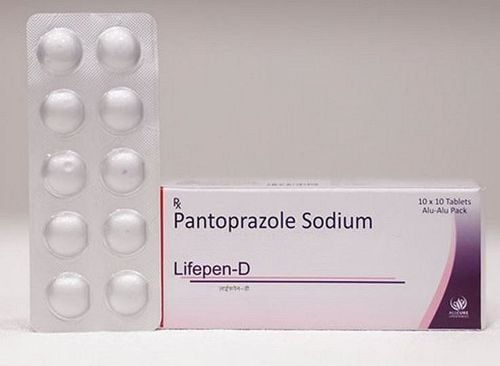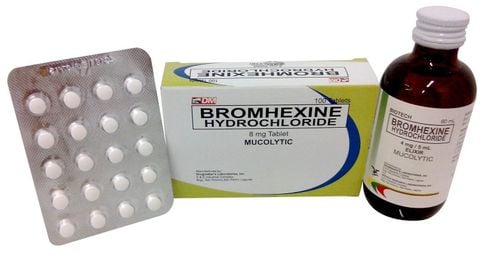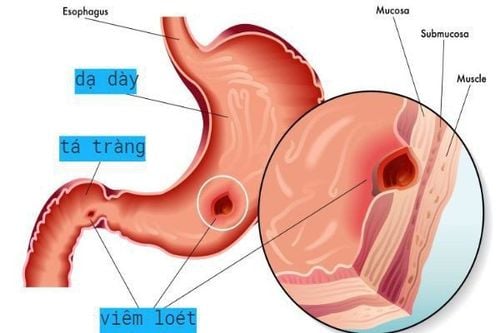This is an automatically translated article.
Post by Master, Doctor Mai Vien Phuong - Gastrointestinal Endoscopy - Department of Medical Examination & Internal Medicine - Vinmec Central Park International General Hospital.Gastrointestinal (GI) syndromes, such as diarrhea, abdominal pain, vomiting, and loss of appetite are commonly seen in patients with coronavirus 2019 (COVID-19). However, the pathophysiological mechanism connecting these gastrointestinal symptoms to coronavirus 2 (SARS-CoV-2) infection remains elusive.
1. Clinical manifestations of Covid-19 patients with digestive syndromes
The clinical severity of Covid-19 patients can be divided into three levels, which are silent, normal and severe. The incubation period of SARS-CoV-2 ranges from 1-14 days, but more commonly 3-7 days. Typical clinical manifestations of SARS-CoV-2 include fever, fatigue, dry cough, and dyspnea. Other common symptoms include menstrual cramps and pain, sore throat, muscle aches, and diarrhea.
In severe cases, infection culminates in acute respiratory distress syndrome, which is associated with high mortality. Although the majority of symptomatic SARS-CoV-2 cases present with pulmonary symptoms, extrapulmonary symptoms are also common and several studies have described the presence of gastrointestinal syndromes. in SARS-CoV-2 infection. The authors identified and analyzed the gastrointestinal symptoms of Covid-19 patients, including diarrhea, nausea, abdominal pain, vomiting, loss of appetite, and bleeding.
2. Pathophysiological mechanisms for gastrointestinal syndrome in Covid-19 patients 2.1. Role of the ACE2 receptor in the pathogenesis of covid-19 Considering the important role of the ACE2 receptor in the pathogenesis of covid-19 patients and its potential impact on severity, several Treatments that have been evaluated include soluble forms of ACE2 (rhACE2), ACE2 blockers, TMPRSS2 inhibitors, and Ang 1-7 receptor agonists. Some of these treatments seem to show promising results and are currently in clinical trials. Another strategy for the management of covid-19 might be to restore the microbiota during dysbiosis through prebiotic or probiotic interventions and dietary supplementation. The binding of SARS-CoV-2 spike proteins to the host receptor, angiotensin-converting enzyme 2 (ACE2), is important for viral entry. This viral infection may be asymptomatic or cause symptoms, such as fever, cough, headache, and muscle aches. Interestingly, up to 40% of patients with coronavirus disease 2019 (covid-19) experience gastrointestinal symptoms, including diarrhea, loss of appetite, nausea, vomiting, and abdominal pain. To provide appropriate medical care to covid-19 patients, it is necessary to explore the pathophysiological mechanisms underlying their gastrointestinal symptoms.
2. 2. Impaired intestinal ACE2 receptor-mediated barrier function ACE2 has emerged as an important regulator of the renin angiotensin system (RAS), by converting angiotensin (Ang) II into a peptide beneficial Ang 1-7. ACE2 has also been identified as the primary receptor for SARS-CoV and SARS-CoV-2. Treatment with spike protein resulted in increased Ang II and pulmonary edema, mediated by AT1R. Because of the similarity between the SARS-CoV and SARS-CoV-2 spike proteins, a similar mechanism of spike-mediated ACE2 downregulation, most likely underlies tissue damage in covid- 19 by skewing the RAS.
2.3. Pathophysiology of digestive syndromes in covid-19 patients The pathophysiology of digestive syndromes in covid-19 patients is still poorly understood. Evidence points to a role for ACE2 cell surface receptors and SARS-CoV-2-mediated inflammation in the gastrointestinal tract. An important structural protein of SARS-CoV-2 is the spike (S) glycoprotein. It consists of two functional units, S1 and S2, which bind to the host cell's ACE2 receptor by membrane fusion, replicate via transcription-transcriptional complexes, and promote proliferation by interfering and suppress the host immune response.
SARS-CoV-2 is highly concentrated in airborne droplets exhaled by infected subjects, inhalation of these particles by an uninfected individual can lead to ACE2 receptor-mediated respiratory infection. .
The respiratory tract is one of the main sites of virus entry. Interestingly, ACE2 receptors are also highly expressed in the gastrointestinal tract, making it another potential route of SARS-CoV-2 infection. In the gut, ACE2 has a completely different function, independent of RAS. ACE2 stabilizes neutral amino acid transporters, such as B0AT1. Loss of ACE2 affects intestinal absorption of certain dietary amino acids, such as tryptophan. Because tryptophan plays an important role in immunity, ACE2 knockout mice exhibit altered gut microbiota and develop more severe dextran sulfate sodium-induced colitis than wild-type control mice. These studies implicated ACE2 in intestinal SARS-CoV-2 infection.
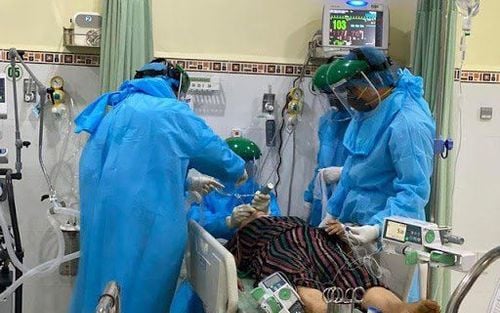
2.4. The ACE2 receptor plays a key role in amino acid transport in the intestinal epithelium ACE2 plays a key role in the intestinal epithelium of amino acid transport, a mechanism involved in the production of antimicrobial peptides, suggesting that its role in the maintenance of the intestinal barrier and intestinal microbiota balance. ACE2 controls the expression of B0AT1 in the gut, which is the major apical membrane transporter in the gut, allowing Na+ absorption along with neutral amino acids, such as tryptophan. Notably, B0AT1 substrates, such as tryptophan and glutamine, signal to down-regulate lymphoid anti-inflammatory cytokines, maintain the integrity of intestinal tight junctions, and trigger the release of peptides antibacterial and modulating mucosal cell autoregulation as defense mechanisms. ACE2-mediated altered B0AT1 expression in covid-19 may be the primary cause of leaky gut. Thus, SARS-CoV-2-mediated disruption of the intestinal barrier could lead to an increase in the bacterial lipopolysaccharide and peptidoglycan systems, exacerbating gastrointestinal inflammation.
For example, one study showed that the mutant protein of SARS-CoV-2 (S1) interacts with the ACE2 complex and the amino acid transporter tryptophan B0AT1. Furthermore, ACE2-B0AT1 cell surface expression in the gut is downregulated leading to a variety of sequelae, which subsequently promote leaky gut as well as dysbiosis of the gut microbiota. Therefore, impaired ACE2-mediated barrier function in combination with dysbiosis may contribute to cytokine storm in covid-19 patients and may also be responsible for gastrointestinal syndromes. their.
2.5. Enteritis in COVID-19 patients with diarrhea Calprotectin (FC) has developed as a reliable fecal biomarker, allowing the detection of enteritis in inflammatory bowel disease (IBD) and infectious colitis. Previous studies have shown that covid-19 patients with diarrhea without IBD have high FC compared with patients without diarrhea, suggesting that infection evokes a significant inflammatory bowel process.
Furthermore, FC levels were significantly correlated with anti-inflammatory interleukin-6 (IL-6) serum levels. A study in rats showed that ACE2 deficiency resulted in increased susceptibility to intestinal inflammation due to epithelial damage. Collectively, the aforementioned studies highlight that gastrointestinal inflammation is overrepresented in patients with covid-19 who also have functional dyspepsia or post-infectious dyspepsia (PI).
2.6. Changes in serotonin metabolism in covid-19 patients The authors reported that plasma concentrations of serotonin (5-hydroxytrytamine, 5-HT) were elevated in covid-19 patients with diarrhea. 5-HT is a hormone and neurotransmitter with a monoamine structure. The synthesis of 5-HT begins with the amino acid L-tryptophan, which is converted to 5-hydroxytryptophan (5-HTP) through the rate-limiting enzyme tryptophan hydroxylase (TPH). 5-HTP is then rapidly decarboxylated by aromatic L-amino acid decarboxylase to yield 5-HT. 5-HT either circulates in our bodies or is absorbed by cells expressing the serotonin reuptake transporter for action or breakdown, producing 5-hydroxyindoleacetic acid (5-HIAA).
TPH is a special enzyme found in 5-HT-producing cells and has two different isoforms, TPH1 and TPH2. TPH1-dependent 5-HT synthesis occurs in enterochromaffin (EC) cells in the gastrointestinal tract, while TPH2 is involved in 5-HT synthesis in the CNS and enteric nervous system.
2.7. Altered serotonin metabolism may result from diarrhea-associated gastrointestinal disturbances. When ACE2 in the gut functions as an adjunct to the amino acid transporter B0AT1, the B0AT1/ACE2 complex in the intestinal epithelium is active. as a regulator of the composition and function of the gut microbiota. Substitution of the B0AT1/ACE2 complex leads to dysbiosis through increased local and systemic immune responses.
Previous studies have also suggested that altered serotonin metabolism may be the underlying cause of diarrhea-related digestive disorders. The findings of high plasma serotonin levels and fecal calprotectin in COVID-19 patients with diarrhea suggest that viral infection induces a systemic inflammatory response associated with digestion.
Furthermore, COVID-19 patients with rectal swabs remained positive for SARS-CoV-2 even after nasopharynx cleared of the virus, suggesting that viral replication and clearance from the gastrointestinal tract may be more potent. compared to the respiratory tract.
2.8. Factor 5-HT is important for the colon peristaltic reflex and gastrointestinal transport Since 95% of total 5-HT is produced by EC cells in the gastrointestinal tract, 5-HT has been studied. extensively on the functions of digestion, especially in peristalsis of digestion. Many studies have demonstrated that 5-HT is important for colon peristalsis reflex and gastrointestinal transit. Furthermore, altered 5-HT levels are strongly associated with irritable bowel syndrome (IBS). It has been shown that platelet-depleted 5-HT plasma concentrations are increased in patients with diarrheal IBS. Therefore, targeted 5-HT signaling approaches have been proposed as a way to alleviate gastrointestinal dysfunction.
A total of seven classes of 5-HT receptors have been identified, typically 5-HT 1, 5-HT 2, 5-HT 3, 5-HT 4 and 5-HT 7 expressed in the gastrointestinal tract. to affect intestinal motility. 5-HT 3 antagonists are particularly effective in treating IBS with diarrhea and 5-HT 4 agonists are effective in treating IBS with constipation.
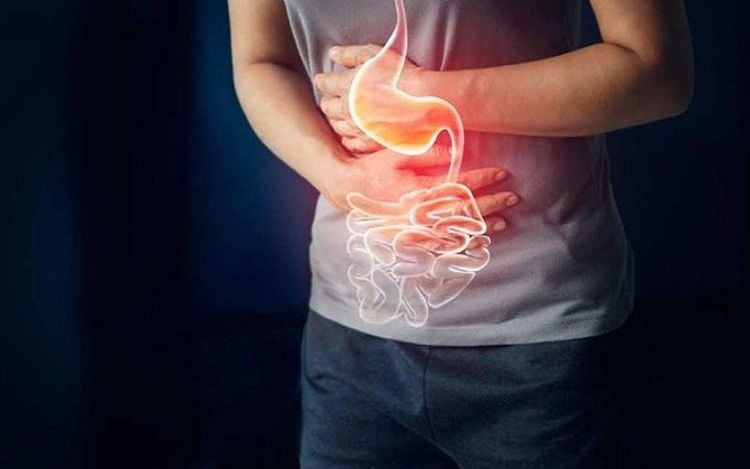
2.9. Plasma 5-HT concentrations in COVID-19 patients Previously, the authors reported that 5-HT plasma concentrations were increased in Covid-19 patients and were directly correlated with severity. severity of Covid-19 symptoms. Furthermore, Covid-19 patients with diarrhea had an increased plasma 5-HT concentration and a lower plasma 5-HIAA/5-HT concentration ratio compared with healthy subjects or Covid-19 patients. no diarrhea. These data suggest that 5-HT is not broken down to 5-HIAA and that 5-HT remains in some Covid-19 patients for a longer period of time, leading to gastrointestinal syndromes such as diarrhea. Therefore, adjustment of 5-HT intake could be a therapeutic modality for patients with Covid-19 diarrhea.
3. Digestive disorders after Covid-19 3.1. Post-COVID-19 Functional Gastrointestinal Disorders Evidence supporting the development of Ds gastrointestinal symptoms following an episode of viral, bacterial, or protozoan gastroenteritis or after resolution of an outbreak acute inflammatory bowel diseases such as irritable bowel syndrome (IBD). This individual susceptibility to D-digestible PI-F is related to genetic predisposition and the presence of pre-existing psychological disorders, such as anxiety or depression. Digestive PI-F D has also been associated with dysregulation of intestinal motility, visceral hypersensitivity, dysbacteriosis, intestinal barrier dysfunction, bile acid malabsorption, and altered serotonin metabolism. Current data suggest that resolution of SARS-CoV-2 infection may lead to persistent gastrointestinal dysfunction resembling some aspects of Ds digestive PI-F. Transient nonspecific enteritis is a common cause of persistent symptoms of F gastrointestinal Ds (eg, viral, parasitic, bacterial, following resolution of IBD flare-ups).
3.2. Fecal SARS-CoV-2 suggests fecal-oral transmission. -mouth. Studies show that more than half of Covid-19 patients test positive for SARS-CoV-2 RNA in stool. One study in a group of pediatric patients infected with SARS-CoV-2 had a positive rectal swab for SARS-CoV-2, even after the nasopharynx had been cleared of the virus. This suggests that the virus elimination process from the gastrointestinal tract may take longer than from the respiratory tract.
Another study showed that SARS-CoV-2 can infect bat enterocytes in the organoid culture system of bat intestinal epithelium. One study showed that infection by SARS-CoV-2 resulted in an altered fecal microbiota during hospitalization.
3.3. The decline in opportunistic pathogens and patients during SARS-CoV-2 infection Coprobacillus, Clostridium ramosum and Clostridium mathwayi was found to be more common in patients with severe Covid-19 infection. In contrast, the presence of F. prausnitzii was correlated with milder disease. Gastrointestinal dysbiosis persisted in the majority of Covid-19 patients despite eradication of the virus, suggesting that exposure to SARS-CoV-2 may be associated with long-term adverse effects. to healthy gut microbiota.
These studies support fecal-oral transmission of SARS-CoV-2. Therefore, from both a clinical and public health standpoint, it is important to fully understand all transmission pathways of SARS-CoV-2. If high levels of infectious virus are present in the intestinal lumen in an infected patient, especially in an asymptomatic patient, this poses a risk during colonoscopy and colonoscopy for the gastroenterologist. chemists, endoscopists, and other patients. For the population, infectious virus particles in the feces released by infected people, if sprayed in a spray form, will have a great impact on the environment.
4. Conclusion Digestive syndromes are overrepresented in Covid-19 patients. A proportion of patients affected by Covid-19 may develop functional gastrointestinal disorders based on the pathogenesis, such as intestinal barrier dysfunction, chronic low-grade enteritis, metabolic changes, etc. serotonin metabolism and intestinal microbiota disturbances.
Please dial HOTLINE for more information or register for an appointment HERE. Download MyVinmec app to make appointments faster and to manage your bookings easily.
References:
Jin B, Singh R, Ha SE, Zogg H, Park PJ, Ro S. Pathophysiological mechanisms underlying gastrointestinal symptoms in patients with COVID-19. World J Gastroenterol 2021; 27(19): 2341-2352 [DOI: 10.3748/wjg.v27.i19.2341]
Bogoch II , Watts A, Thomas-Bachli A, Huber C, Kraemer MUG, Khan K. Global spread potential of one new type of coronavirus from China. J Travel Med . Year 2020; 27 : taaa011. [ PubMed ] [ DOI ] [ Citation in this article: 1 ] [ Citation in CrossRef: 158 ]







